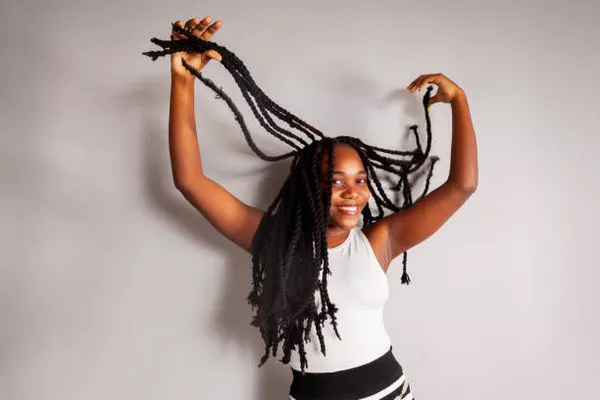Braiding is a timeless and versatile hairstyle that can range from intricate designs to simple, classic plaits. One common question people ask is, “How long does my hair need to be for braids?” Understanding this can help you achieve the best results for your desired braid style. This article will provide a detailed analysis of the hair lengths required for different types of braids, and factors that influence the braiding process.
Understanding Hair Length Requirements
Basic Braid Length Requirements
To successfully braid hair, the length of your hair plays a crucial role. Here’s a breakdown of the general requirements for various types of braids:
Classic Three-Strand Braid
Minimum Length: 4-6 inches
Why: A classic braid requires enough length to weave the strands over and under each other. Shorter hair might not hold the braid well or might be difficult to manage.
French Braid
Minimum Length: 6-8 inches
Why: A French braid incorporates additional hair as you braid, which requires more length to achieve a smooth, consistent braid.
Dutch Braid
Minimum Length: 6-8 inches
Why: Similar to the French braid, but the strands are crossed under each other. A bit more length helps in keeping the braid secure and tidy.
Fishtail Braid
Minimum Length: 8-10 inches
Why: The fishtail braid involves more intricate weaving of hair strands, so longer hair ensures a better appearance and easier manipulation.
Box Braids
Minimum Length: 6-8 inches
Why: Box braids are individual plaits that often use hair extensions. Shorter natural hair might not be suitable for traditional box braids without extensions.
Lemonade Braids
Minimum Length: 10-12 inches
Why: These braids are typically styled close to the scalp and often require longer hair to achieve the desired look and maintain the braid.
Cornrows
Minimum Length: 3-4 inches
Why: Cornrows are braided close to the scalp and require relatively short hair compared to other braid styles.
Goddess Braids
Minimum Length: 8-10 inches
Why: Goddess braids are similar to cornrows but often thicker and more elaborate. Longer hair helps in achieving the desired fullness and length.
See Also: How Long Does Jumbo Box Braids Take
Factors Influencing Hair Length for Braids
Hair Texture
Hair texture significantly impacts how braids turn out and how long your hair needs to be:
Straight Hair: Generally requires more length for braids to hold well, as it may not have the natural volume that curly or wavy hair does.
Curly Hair: May need slightly less length due to its natural texture, which adds volume and helps braids hold.
Wavy Hair: Falls between straight and curly hair. It might require a bit more length than curly hair but less than straight hair for certain braids.
Hair Thickness
The thickness of your hair also affects the braiding process:
Thick Hair: Can handle shorter lengths for braids because it adds more volume and structure.
Thin Hair: Might need longer lengths to achieve a fuller braid appearance, as thin hair can appear sparse in braids.
Desired Braid Style
Different braid styles have specific length requirements:
Simple Braids: Require less length compared to intricate styles.
Complex Braids: Involve more weaving and might require longer hair for a fuller look.
Braiding Technique
Techniques such as adding extensions or using different braiding methods can influence the length requirement:
Adding Extensions: Allows for shorter natural hair to achieve longer braids.
Braiding Methods: Some methods can work with shorter hair, but others may need more length for optimal results.
Practical Tips for Braiding with Various Hair Lengths
For Short Hair
If your hair is on the shorter side, here are some tips:
Use Hair Extensions: Adding extensions can help achieve longer braids.
Choose Simple Styles: Opt for basic braids or cornrows that work well with shorter lengths.
Embrace Accessories: Use clips or bands to hold braids in place and enhance their appearance.
For Medium-Length Hair
With medium-length hair, you have more flexibility:
Experiment with Styles: Try different braids like French braids or fishtail braids that suit your length.
Focus on Texture: Utilize your hair’s natural texture to enhance the braid’s look.
For Long Hair
Long hair offers the most versatility:
Explore Complex Styles: Longer hair allows for more intricate braids like Dutch braids or lemonade braids.
Maintain Health: Keep your hair well-conditioned to ensure braids look their best.
Conclusion
Understanding the length requirements for different types of braids can help you choose the right style and achieve the look you desire. Whether you have short, medium, or long hair, there are various braiding options to explore. From classic three-strand braids to intricate goddess braids, the length of your hair plays a crucial role in determining what styles are possible and how well they will turn out. By considering factors such as hair texture, thickness, and desired style, you can make informed decisions about your braiding journey.

